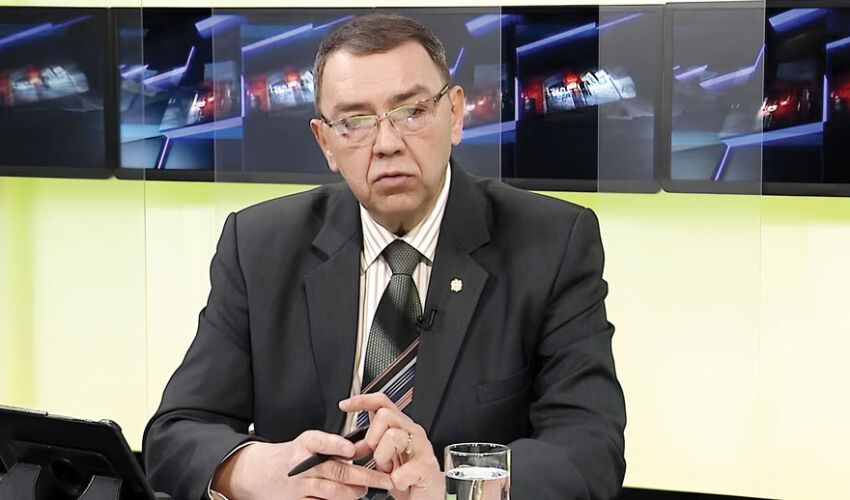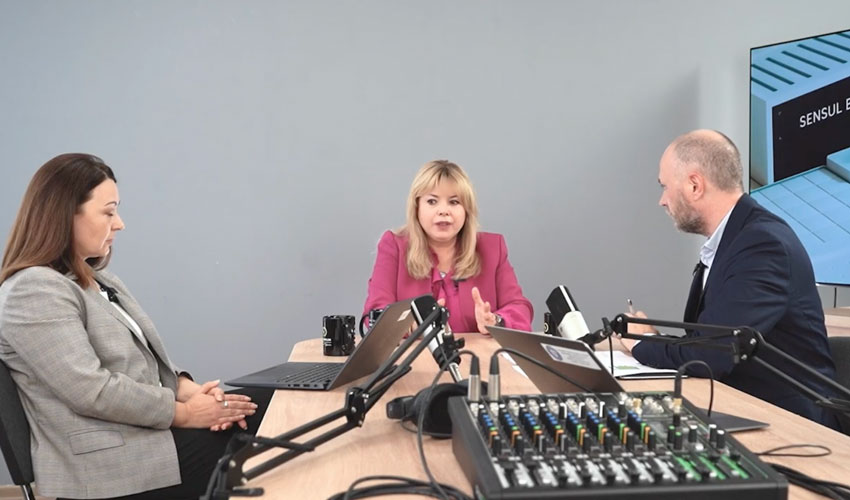
Vladimir Golovatiuc
Bank reserves are being put to work
Last week, the NBM decided to simultaneously reduce the mandatory reserve requirements both in Moldovan lei and in freely convertible currency, leaving the basic refinancing rate unchanged. With its decision, according to the regulator’s statement, it aims to “satisfy the liquidity needs of the banking system and reduce the cost of lending, stimulating consumption and investment”.
At the same time, the NBM does not expect a corresponding response from financial institutions to reduce interest rates on consumer loans. Although it claims that it continues the policy of easing by adjusting the reserved funds in the financial market.
“The relevant decision was made in view of the current forecasts of annual inflation, showing a downward trend. Presumably – until the middle of next year. After that it will be relatively stable, remaining near the target inflation rate until the end of the forecast period,” the regulator said in a statement.
According to economist Vladimir Golovatyuk, the reasons for the loosening of the reins – in the stimulation of kombanks to lend to the government. According to the expert, the excess liquidity of banks has halved in recent years, and this could not but affect domestic operations.
Since June 2025, the increase in new loans to businesses and households has stopped. The average monthly volume of government securities purchased by banks in the 2nd half of the year fell by 13%. As a result, the Ministry of Finance faced the problem of placement of government securities in the full volume of the announced issue. Besides, banks significantly reduced their investments in NBM certificates – from 10.9 billion lei in January to 3.6 billion lei in October 2025.
“While in the first half of the year banks purchased 95% of SS offered for sale by the Ministry of Finance, in the following months – only 74%. As a result of insufficient demand, about 7 billion lei of government securities remained unsold. This means that the corresponding volume of budget expenditures will not be financed, and the money will have to be found elsewhere. And this is a serious problem. Why this is happening is a serious question that requires a special study. So far, one thing is clear – the economy has been stagnating for the third year already, and these are not empty words,” Vladimir Golovatiuc said.
Although the economist believes that this decision is rather symbolic, as “the total effect of this reduction is less than 2 billion lei, and it will do little to improve the overall economic situation. The government’s internal borrowing is lagging behind the plan. The adjusted state budget for 2025 envisages the previous limit of 8.5 billion lei for the growth of borrowings on the domestic market. This limit is unlikely to be chosen by the end of the year, if the financial market does not show “consciousness”.
Foreign exchange reserves are “working on wear and tear”
The situation in the economy makes the National Bank more and more actively use the “safety cushion” of the state to ensure its vital activity. After the increase in August and September, the official reserve assets of Moldova in October decreased by 22.26 million euros, amounting to 5,141.43 million euros.
The currency swing was reversed by the need to maintain the exchange rate of the national currency and fulfill debt obligations. The reduction was primarily due to payments for servicing external debt (by 26 million euros) and the sale of foreign currency by the National Bank (by 33 million euros).
The inflow of foreign currency in October as a result of the depreciation of the euro against other reserve currencies (+22.6 million euros) and the receipt by the government of loans and grants for investment projects (+4.1 million euros) could not compensate for expenditures from the state budget.
The overall balance since the beginning of 2025, taking into account the dynamics of revenues and expenditures – the reduction of official foreign exchange reserves by 106 million euros, calculated economist Vladimir Golovatyuk, while a year earlier they increased by 270 million euros.
In 10 months, the government received loans and grants worth 651 million euros. At the same time, expenditures on servicing foreign debt reduced foreign currency reserves by €456 million. The decrease in reserves since the beginning of the year was also affected by the strengthening of the European currency – by 321 million, sale of foreign currency – by 178 million and some other operations.
“Despite the still super-sufficient size, a dangerous trend of reducing foreign exchange reserves has formed. The need to service the state debt while reducing foreign currency revenues to the government, to pay for growing imports while export earnings are falling, as well as the need for foreign exchange interventions by the National Bank when there is a general shortage of currency on the market can provoke the depreciation of the Moldovan leu, the subsequent price rise and much more,” said Vladimir Golovatiuc.
Annual inflation accelerates despite forecasts
In October, after a respite in September, the annual inflation rate returned to the growth trajectory, thanks to the rise in food prices (8.3%). The annual inflation index stood at 106.99% in October. Average consumer prices rose by about 7.0% in October 2025 from a year earlier, including food products by 6.8%, non-food products by 2.5% and personal services by 13.8%.
At the same time, an acceleration in the growth of core inflation (excluding the growth of prices for food products and goods and services at regulated prices) is registered: 4.61% – since the beginning of the year, 5.06% – in annual terms. By the way, it is the dynamics of core inflation that determines the effectiveness of the National Bank’s measures to ensure price stability and timely targeting.
In October, the overall annual inflation rate rose by 0.13 p.p., while core inflation – by 0.6 p.p.. After a three-month seasonal decline in October 2025, the overall rate was 14% below the June rate, while core inflation rose by 26% over the same period.
“Given the monthly dynamics of price growth, the annual inflation rate by the end of the year will certainly exceed the 8% mark, which will mean, firstly, a significant deviation from the specified deviation corridor, and secondly – the fallacy of the NBM’s forecast estimates, which were based on 6.8% at the end of 2025, with a further decline until mid-2026”, – says Vladimir Golovatiuc.










